Quick Format vs Full Format: Which is Better for Your Needs?
- Home
- Support
- Tips Data Recovery
- Quick Format vs Full Format: Which is Better for Your Needs?
Summary
A quick format is a fast procedure that removes the file allocation table, making the drive appear empty while the actual data remains on the disk until it is overwritten. This method is time-efficient and convenient for reusable drives but poses a risk as data recovery is possible.In contrast, a full format involves a more thorough process that checks the entire disk for bad sectors and overwrites all data, making it more secure but time-consuming. This method is ideal for securely erasing data or preparing a drive for new use, ensuring that old data cannot be recovered.
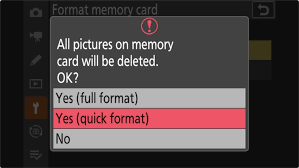
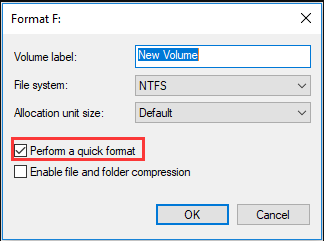
- Time-Efficient: Quick formats take only a few seconds to complete, making them ideal for situations where time is a constraint.
- Convenient for Reusable Drives: For devices like USB thumb drives, a quick format is usually sufficient.
- Data Recovery Possible: Since the data is not truly erased, it can be recovered using data recovery software, posing a security risk if sensitive information is involved.
- No Bad Sector Check: A quick format does not scan for bad sectors, which means potential issues with the drive may go unnoticed.
- Thorough Data Erasure: A full format ensures that all data is completely erased, making it unrecoverable.
- Bad Sector Identification: The process includes a scan for bad sectors, marking them so that the operating system does not use them in the future.
- Time-Consuming: Depending on the size and speed of the drive, a full format can take anywhere from a few minutes to several hours.
- Wear and Tear: The extensive write process can cause additional wear on the drive, which may be a concern for older or heavily-used drives.
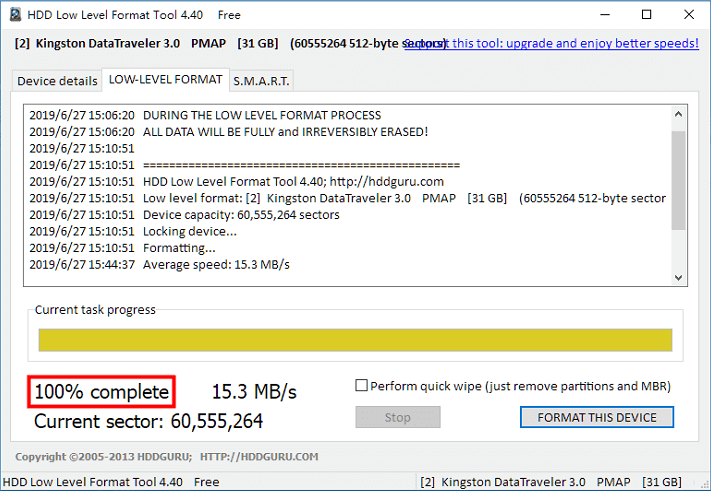
- Low-level format an entire disk at one time.
- Cause physical damage to hard disk drives when the disk contains bad sectors.
- Slow to execute low-level format on hard drives. For example, it would last 20+ hours in low-level formatting a 320GB disk.
- Reformatting an Existing Drive: If the drive has been previously formatted and you are confident it has no bad sectors.
- Time Constraints: When you need to format a drive quickly and are not concerned about data recovery or bad sectors.
- New Drives: When formatting a brand-new drive to ensure it is free of bad sectors.
- Data Security: To securely erase data and make it unrecoverable before selling or donating a drive.
- Suspected Issues: If you suspect the drive may have bad sectors or other issues.
- Windows warns you “You need to format the disk in drive H: before you can use it“.
- Hard drive partition, USB, or SD card becomes inaccessible or RAW.
- Unlock a BitLocker partition without a password.
- You want to convert the file system format of a drive or USB pen drive to NTFS, FAT32, exFAT, or other formats.
- You want to quickly format a drive and remove all existing data at one time.
- Partition a new hard drive and format it to NTFS, FAT32, etc.

Easy to use Only simple steps to recover data from storage devices.
Multiple scan modes Fast partition scan, whole partition scan and whole disk scan for different recovery needs.
File types Support to recover pictures, videos, audios, documents, mails, etc.
Supported storage devices Recover data from recycle bin, SD card, external disk, etc.
Supported systems Windows 10, 8.1, 8, 7, Vista, XP, 2000 and Mac OS X10.6, 10.7, 10.8.
Easy to use Only simple steps to recover data from storage devices.
Multiple scan modes - 3 scan modes for different recovery needs.
Supported storage devices Recover data from recycle bin, SD card, external disk, etc.
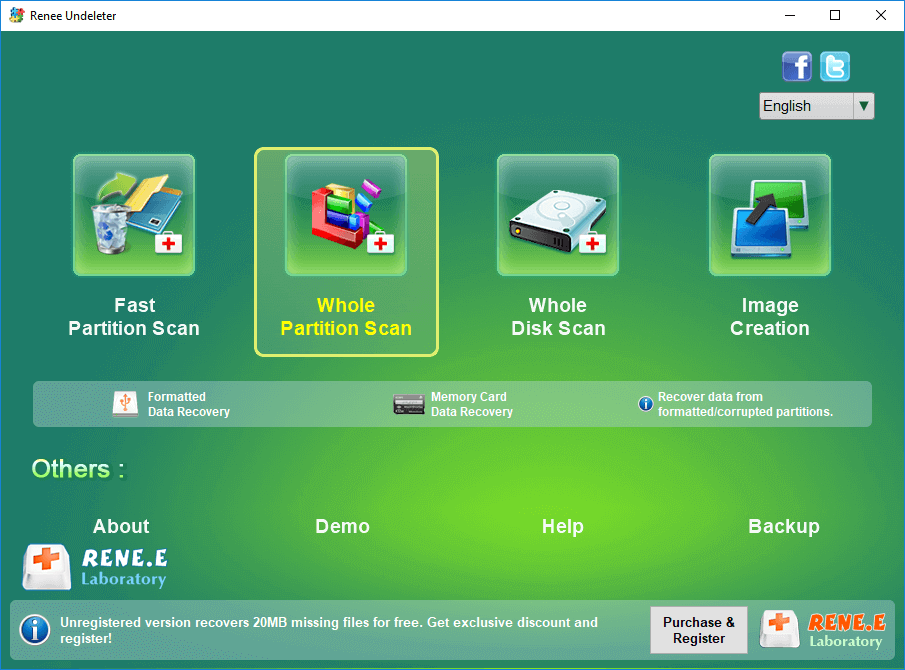
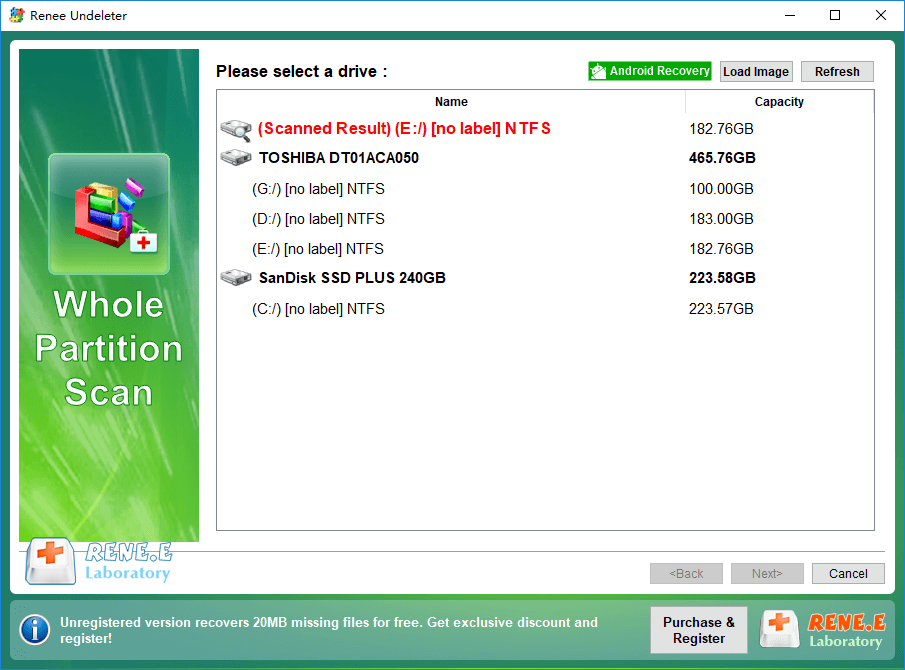
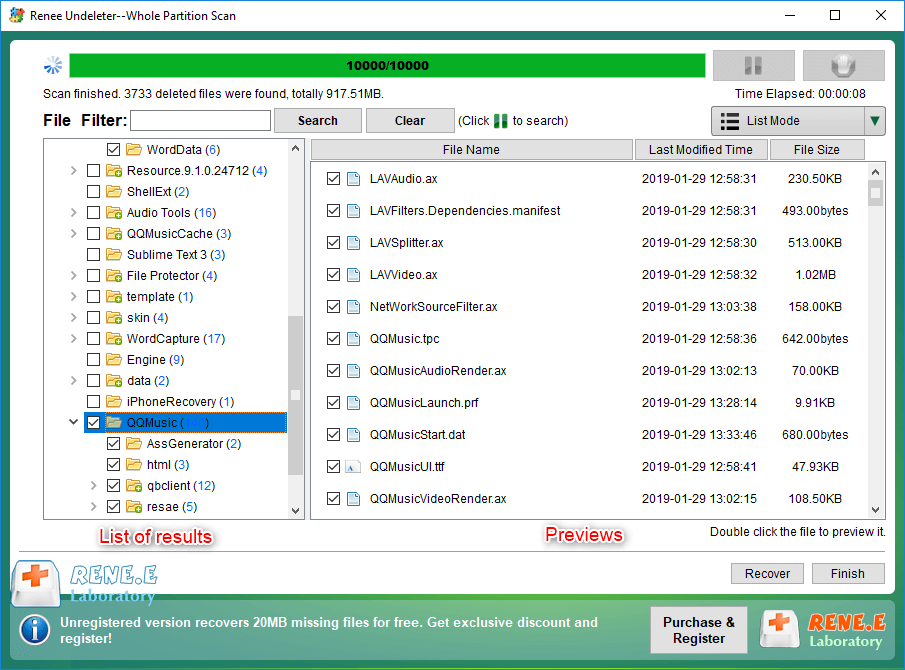

Easy to use Only simple steps to recover data from storage devices.
Multiple scan modes Fast partition scan, whole partition scan and whole disk scan for different recovery needs.
File types Support to recover pictures, videos, audios, documents, mails, etc.
Supported storage devices Recover data from recycle bin, SD card, external disk, etc.
Supported systems Windows 10, 8.1, 8, 7, Vista, XP, 2000 and Mac OS X10.6, 10.7, 10.8.
Easy to use Only simple steps to recover data from storage devices.
Multiple scan modes - 3 scan modes for different recovery needs.
Supported storage devices Recover data from recycle bin, SD card, external disk, etc.
Relate Links :
Understanding Differential Backup: A Comprehensive Guide
01-07-2024
Amanda J. Brook : The article provides an in-depth exploration of differential backups, a data protection method that saves all changes made...
How to Clone a Thumb Drive: Essential Tools and Techniques
28-06-2024
Jennifer Thatcher : Discover the essential tools and methods to clone a thumb drive effectively. Our comprehensive guide covers sector copy...
Reset Windows 10 Password Without Logging In: Four Effective Methods
11-06-2024
Jennifer Thatcher : Discover how to reset your Windows 10 password without logging in. This guide provides step-by-step instructions for various...
How to Clone HDD to SSD in Windows 10/11 Without Reinstalling
01-06-2024
John Weaver : Discover how to effortlessly clone your HDD to an SSD in Windows 10/11 without the hassle of reinstalling...




